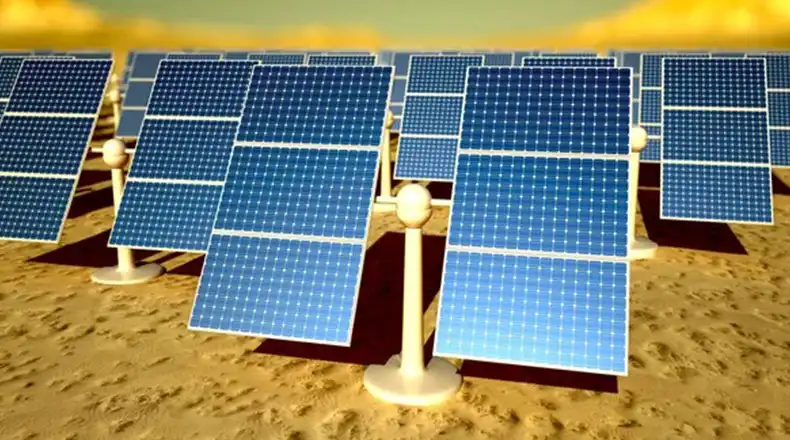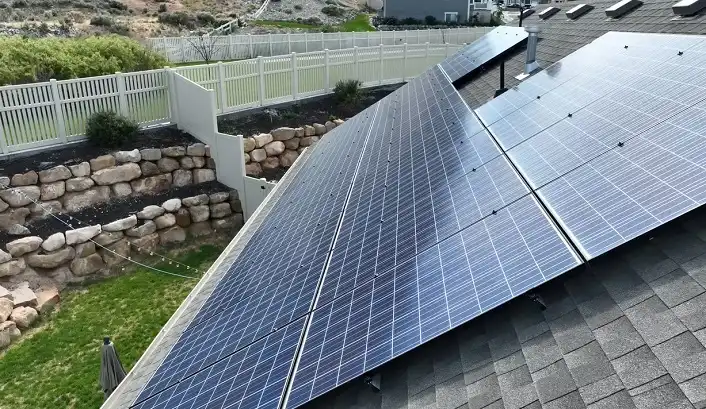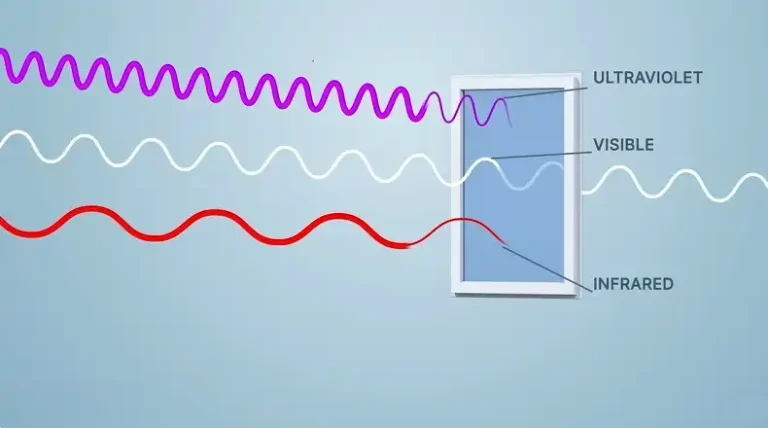Solar Energy Conversion | What Technologies Involved
Solar energy conversion isn’t just a futuristic dream; it’s a rapidly growing technology with the potential to revolutionize our energy landscape. By tapping into the sun’s endless power, we can reduce our reliance on fossil fuels, curb greenhouse gas emissions, and contribute to a cleaner, more sustainable future.
But solar energy isn’t without its challenges. Technological advancements are essential to improve efficiency and reduce costs. Additionally, integrating large-scale solar energy systems into existing grids requires careful planning and infrastructure development. However, ongoing research and development hold immense promise, offering solutions to current limitations and paving the way for a brighter, sun-powered future.
Are you curious to learn more about the exciting possibilities of solar energy conversion? To learn more about solar technologies, their applications, and the challenges and opportunities that lie ahead. Let’s unlock the sun’s potential and create a more sustainable future for our planet.

Technologies for Solar Energy Conversion
The sun bathes our planet in a vast amount of energy, and we are learning to harness this power through various technologies. At the heart of these technologies lies the conversion of light into electricity, a process known as the photovoltaic effect. When sunlight strikes specific materials, like semiconductors in solar cells, it excites electrons, causing them to flow and generate electricity.
A. Photovoltaics (PV) Technology
Photovoltaics (PV) is the primary method for turning solar energy into electricity. Solar cells, made of semiconductor materials like silicon, release electrons when exposed to sunlight. The liberated electrons create an electric current as they move towards oppositely charged electrodes on the cell.
There are several types of solar cells available, each with its unique properties and advantages:
- Monocrystalline silicon solar cells: These are the most efficient type of solar cell, offering the highest energy conversion efficiency. However, they are also the most expensive due to their complex manufacturing process.
- Polycrystalline silicon solar cells: Slightly less efficient than monocrystalline cells, polycrystalline cells are more affordable and easier to manufacture.
- Thin-film solar cells: These are made from layers of semiconductor material deposited onto a thin substrate, making them lightweight and flexible. They are less efficient than silicon cells but can be more cost-effective for large-scale installations.
- Organic solar cells: These are made from organic materials like polymers, offering unique properties like transparency and flexibility. While they are currently less efficient than other types of solar cells, they hold promise for future applications.
PV technology has a wide range of applications, from small-scale residential rooftop installations to large-scale utility-scale solar farms. Some common applications include:
- Residential rooftop systems: These systems generate electricity for homes and businesses, reducing reliance on the grid and lowering electricity bills.
- Utility-scale solar farms: These large installations generate enough electricity to power thousands of homes and businesses.
- Portable solar chargers: These small, lightweight devices can be used to charge electronic devices on the go, making them ideal for camping, hiking, and other outdoor activities.
PV technology is a mature and rapidly evolving field. As research and development continue, we can expect improvements in efficiency, reduced costs, and the development of new and innovative applications. The future of solar energy conversion is bright, and PV technology is at the forefront of this exciting journey.
B. Concentrating Solar Power (CSP) Technology
While PV technology focuses on directly converting sunlight into electricity, Concentrating Solar Power (CSP) technology takes a different approach. CSP systems use mirrors or lenses to concentrate a large area of sunlight onto a receiver, generating high temperatures. This concentrated heat can then be used to generate electricity or drive other industrial processes.
Mechanism of CSP Technology
Imagine a magnifying glass focusing the sun’s rays onto a single point. CSP technology works on a similar principle, using mirrors or lenses to concentrate sunlight onto a receiver. The concentrated light heats a transfer fluid, typically molten salt or oil, to very high temperatures (up to 750°C). This hot fluid is then used to drive a steam turbine, generating electricity in much the same way as conventional thermal power plants.
Types of CSP Systems
There are three main types of CSP systems, each with its own unique design and strengths:
Parabolic trough systems: These systems use long, parabolic-shaped mirrors that track the sun throughout the day, concentrating sunlight onto a receiver tube running along the focal line.
Linear Fresnel systems: These systems use flat mirrors arranged in rows to reflect sunlight onto an elevated receiver. They are less expensive than parabolic trough systems but have a lower concentration ratio.
Dish Stirling systems: These systems use large, parabolic dish-shaped mirrors to focus sunlight onto a Stirling engine, a device that converts heat energy directly into electricity. They offer the highest efficiency among CSP technologies but are more complex and expensive.
Applications of CSP Technology
CSP technology is primarily used for utility-scale electricity generation. However, its applications go beyond just generating electricity. CSP systems can also be used for:
Desalination: The heat generated by CSP systems can be used to power desalination plants, providing clean drinking water in areas with limited freshwater resources.
Industrial processes: The high temperatures achieved in CSP systems can be used in various industrial processes, such as chemical production and mineral processing.
Combined heat and power (CHP): CSP systems can be combined with other energy sources, such as natural gas, to provide both electricity and heat for residential and commercial buildings.
CSP technology offers a promising alternative to fossil fuels for generating clean and reliable energy. As the technology continues to mature and costs decline, we can expect to see more widespread deployment of CSP systems in the coming years.
C. Solar Thermal Energy Conversion
Beyond electricity, the sun’s energy can also be directly harnessed for its thermal energy. Solar thermal technology utilizes this heat for various applications, offering a clean and efficient way to warm homes, businesses, and even swimming pools.
Mechanism of Solar Thermal Collectors
Sunlight passes through a transparent cover and heats the absorber plate. The heat is then transferred to a circulating fluid, like water, through convection. This heated fluid is then transported via pipes to its destination, such as a hot water tank or a heating system. The collector is insulated to minimize heat loss and ensure efficient operation.
Types of Solar Thermal Collectors
At the heart of solar thermal systems lie solar collectors. These devices are designed to absorb sunlight and transfer the captured heat to a fluid, typically water or a mix of water and antifreeze. The heated fluid then circulates through a system, delivering the heat to its destination.
Flat-plate collectors: These are the most common type of solar thermal collector. They consist of a flat, insulated box with a transparent cover that allows sunlight to enter. The sunlight heats a dark absorber plate inside the box, transferring the heat to the circulating fluid.
Evacuated tube collectors: These collectors use double-walled glass tubes to create a vacuum around the absorber plate. This vacuum significantly reduces heat loss, allowing them to achieve higher temperatures than flat-plate collectors.
Air collectors: As their name suggests, these collectors use air instead of a liquid as the heat transfer fluid. They are often used for pre-heating air for ventilation systems or drying agricultural products.
Applications of Solar Thermal Energy
Solar thermal technology offers a range of practical applications, including:
Space heating: Solar thermal systems can be used to heat homes, offices, and other buildings, reducing reliance on traditional heating sources like fossil fuels.
Water heating: A popular application, solar water heaters can significantly reduce the energy required for hot water, leading to cost savings and environmental benefits.
Swimming pool heating: Solar thermal systems are a cost-effective and environmentally friendly way to extend the swimming season by heating pool water.
Industrial processes: Solar thermal energy can be used in various industrial processes requiring heat, such as food processing, textile drying, and desalination.
By utilizing the sun’s abundant thermal energy, solar thermal technology provides a sustainable and efficient solution for heating needs across various sectors. As the technology continues to improve and costs decrease, we can expect its adoption to grow, contributing to a cleaner energy future.
D. Emerging Technologies
While established technologies like photovoltaic and solar thermal systems are crucial players in the renewable energy landscape, the future holds exciting possibilities for even more efficient and innovative ways to harness the sun’s power. Emerging technologies are pushing the boundaries of solar energy conversion, promising significant advancement in efficiency, cost, and application.
1. Artificial Photosynthesis: This groundbreaking technology mimics the natural process of photosynthesis in plants, using sunlight, water, and carbon dioxide to produce clean energy in the form of hydrogen or other fuels. Although still in its early stages, artificial photosynthesis holds immense potential for generating a sustainable and carbon-neutral energy source.
2. Quantum Dots: These tiny semiconductor particles exhibit unique properties that allow them to absorb and convert sunlight across a broader spectrum of wavelengths than traditional silicon cells. This translates to potentially higher efficiency and potentially lower production costs, making quantum dot solar cells a promising avenue for future development.
3. Perovskite Solar Cells: These innovative cells utilize perovskite materials with a unique crystal structure that enables efficient light absorption and charge transport. Perovskite solar cells have achieved remarkable efficiency gains in recent years, emerging as a potential game-changer for the solar industry. Their lightweight, flexible nature also opens doors for new applications beyond traditional solar panels.
4. Perovskite-Silicon Tandem Cells: Combining the strengths of perovskite materials with the well-established silicon technology, tandem cells offer the potential for exceeding the efficiency limits of single-junction solar cells. By stacking perovskite and silicon layers, these tandem cells can capture a wider range of sunlight and achieve even higher conversion efficiency, paving the way for even more efficient solar energy generation.
These are just a few examples of the exciting advancements emerging in the field of solar energy conversion. As research and development continue, these technologies have the potential to revolutionize the way we generate and utilize clean, renewable energy. With their promise of improved efficiency, lower costs, and wider applicability, emerging technologies offer a bright future for harnessing the sun’s power and creating a more sustainable energy future.
Factors Affecting Solar Energy Conversion Efficiency
The efficiency of solar energy conversion, the percentage of sunlight converted into usable energy, is influenced by various factors. Acquiring knowledge of these factors is essential for maximizing the output and harnessing the sun’s energy effectively.
1. Solar Radiation: The intensity and distribution of sunlight directly impact the amount of energy collected by solar panels and thermal collectors. Naturally, higher levels of sunlight translate to greater energy output. Factors like cloud cover, geographic location, and time of day can affect the availability and intensity of sunlight, influencing the overall efficiency of the system.
2. Temperature: Solar cell performance is highly sensitive to temperature. As the temperature rises, the efficiency of solar cells typically decreases. This is because elevated temperatures increase the internal resistance of the cell, hindering charge flow and reducing power output. Conversely, colder temperatures can improve the performance of solar cells to a certain extent. However, extreme cold can also lead to reduced output.
For solar thermal collectors, the efficiency is affected by the temperature difference between the collector and its surroundings. Higher temperature differences drive more efficient heat transfer, leading to better performance. This is why proper insulation is crucial for maximizing the efficiency of solar thermal systems.
3. Materials and Design: The choice of materials and the design of solar energy conversion systems significantly impact their efficiency. Advanced materials with superior light absorption, charge transport, and thermal properties are continuously being developed to improve efficiency. The design of solar panels and thermal collectors also plays a crucial role in optimizing the capture and conversion of sunlight. Factors like the size, shape, and orientation of the panels, as well as the design of the internal components, can affect the overall efficiency of the system.
4. Tracking Systems: Tracking systems are designed to automatically adjust the position of solar panels throughout the day to maximize the amount of sunlight they capture. This is particularly beneficial in regions with less direct sunlight or variable weather conditions. By keeping the panels perpendicular to the sun’s rays throughout the day, tracking systems can significantly improve the efficiency of solar energy conversion.
Aquiring and addressing these factors is essential for optimizing the performance of solar energy conversion systems. By carefully considering the specific conditions and implementing appropriate technologies, we can maximize efficiency and harness the sun’s power to its full potential.
Environmental and Economic Considerations
While optimizing the technical efficiency of solar energy conversion is vital, its impact extends beyond mere numbers. The environmental and economic considerations of this technology play a vital role in its potential to shape a more sustainable future.
1. Environmental Impact: One of the most significant advantages of solar energy is its environmental friendliness. By harnessing the sun’s clean energy, solar technology helps mitigate the detrimental effects of fossil fuels on our planet. By utilizing solar energy, we can:
Reduce greenhouse gas emissions: Unlike traditional energy sources that burn fossil fuels, solar energy generation does not emit greenhouse gases like carbon dioxide, a major contributor to climate change.
Improve air quality: By reducing reliance on fossil fuels, solar energy contributes to cleaner air, reducing respiratory illnesses and improving public health.
Conserve natural resources: Solar energy utilizes a renewable and abundant resource, the sun, helping to conserve finite fossil fuel reserves for future generations.
2. Economic Viability: The cost of solar energy has significantly decreased in recent years, making it a more competitive option compared to traditional energy sources. With the increasing efficiency and affordability of solar technology, the economic benefits are becoming increasingly evident:
Lower energy bills: Installing solar panels can significantly reduce electricity bills, providing long-term financial savings for residential and commercial consumers.
Job creation: The growing solar energy industry creates numerous jobs in manufacturing, installation, and maintenance, contributing to economic growth.
Energy independence: By generating their own clean energy, individuals and communities gain a degree of independence from fluctuating fossil fuel prices and potential supply shortages.
3. Government Policies and Incentives: Government policies and incentives play a crucial role in promoting the adoption of solar energy. These initiatives can significantly impact the economic viability and widespread deployment of solar technology:
Feed-in tariffs: These programs offer financial incentives to individuals and businesses who generate solar energy and contribute excess power to the grid.
Tax credits and rebates: Governments often offer tax benefits and rebates to encourage the installation of solar panels, making them more affordable for consumers.
Net metering: This policy allows consumers to sell any excess solar energy they generate back to the grid, receiving credit on their electricity bills.
By implementing these policies and incentives, governments can create an environment where solar energy becomes a more attractive and accessible option for a wider range of individuals and organizations. This can accelerate the transition to a more sustainable energy future powered by the sun.
Future of Solar Energy Conversion
Standing at the precipice of a new era in energy, solar technology is poised to transform the way we power our world. With remarkable advancements taking place and exciting opportunities on the horizon, the future of solar energy conversion holds immense potential for a cleaner, more sustainable future.
1. Technological Advancements: The relentless pursuit of innovation continues to push the boundaries of solar energy conversion. Potential breakthroughs in various areas hold the key to further improving efficiency and reducing costs:
Next-generation materials: Research on advanced materials like Perovskites and quantum dots promises to significantly enhance the efficiency of solar cells, potentially reaching levels exceeding current limitations.
Tandem cells: These innovative cells combine different materials to capture a broader spectrum of sunlight, offering the potential for even higher efficiency and more cost-effective solar energy generation.
Concentrated solar power (CSP) advancements: Refining existing CSP technologies and exploring new hybrid systems can further improve efficiency and reduce costs, making this technology a more attractive option for large-scale power generation.
2. Grid Integration: As the share of solar energy in the electricity grid increases, integrating these renewable sources effectively becomes crucial. This presents both challenges and opportunities:
Balancing supply and demand: Fluctuations in solar energy generation due to weather conditions require advanced grid management systems to ensure stable and reliable electricity supply.
Energy storage: Developing efficient and cost-effective energy storage solutions is critical to storing excess solar energy generated during peak sunlight hours and utilizing it when needed.
Smart grids: Implementing intelligent grid technologies can enhance grid resilience, optimize energy flow, and facilitate the integration of large-scale solar energy into the existing infrastructure.
3. Global Impact: Beyond its technological advancement and economic benefits, solar energy has the potential to address global energy challenges and promote sustainable development:
Empowering communities: Providing access to clean and affordable solar energy can empower communities in developing countries, improving living standards and promoting economic growth.
Combating climate change: By reducing reliance on fossil fuels and transitioning to clean energy sources like solar, we can significantly contribute to mitigating climate change and its devastating impacts.
Promoting energy security: Diversifying the energy mix with solar power can enhance energy security and reduce reliance on imported fossil fuels, leading to a more stable and secure energy future.
Top Inquiries
1. Can solar energy power my entire home?
Yes, absolutely! With advancements in technology and the availability of various solar panel configurations and battery storage options, it’s becoming increasingly feasible to power your entire home with solar energy. Depending on your energy consumption and local regulations, achieving complete energy independence might require a larger solar system and battery storage.
2. Is solar energy expensive?
While the initial investment for installing solar panels can be significant, the long-term cost savings outweigh the upfront expense. Government incentives, net metering programs, and reduced electricity bills from generating your own clean energy contribute to making solar energy a cost-effective investment.
3. How does solar energy work in cloudy weather?
Even on cloudy days, solar panels still generate electricity, though at a lower capacity than when bathed in direct sunlight. Modern solar panels are designed to capture even diffuse light, ensuring some energy production even during less optimal weather conditions.
4. Does solar energy require a lot of maintenance?
Solar panels require minimal maintenance, typically requiring an occasional cleaning to remove dust and debris. Regular monitoring of your system’s performance allows you to identify any potential issues early and address them promptly.
5. What are some innovative advancements in solar technology?
The field of solar energy conversion is constantly evolving, with exciting new developments emerging frequently. Some noteworthy advancements include Perovskite solar cells offering higher efficiency, quantum dots capturing a broader spectrum of sunlight, and concentrated solar power (CSP) advancements further enhancing its capabilities.
Final Verdict
Solar energy conversion offers a transformative solution for a cleaner, more sustainable future. From utilizing sunlight’s power through diverse technologies like photovoltaics and solar thermal systems to exciting advancements in materials and grid integration, the future holds immense potential. By embracing innovation and collaboration, together we can unlock the full potential of solar energy and create a brighter future for generations to come.






